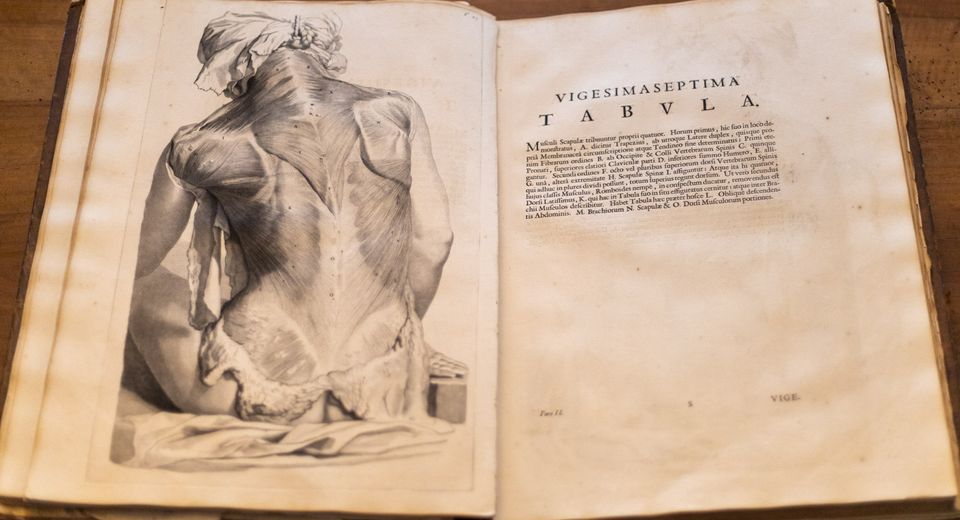Anatomia humani corporis
Rochefort - Ancienne école de médecine navale
Govard Bidloo (1649-1713), Anatomia humani corporis, sumptibus viduae J. a Someren, haeredum J. a Dyk, H. et viduae T. Boom, 1685
Dépôt of Service de santé des armées
The Naval Medical School’s library is composed of a varied collection testifying to the institution’s educational vocation. Published in 1685, Anatomia humani corporis bears witness to the quest for knowledge of the human body and the dissemination of such knowledge.
An emblematic educational work
 Enlarge image : 6_Romain-Osi-Ecole-navale-2697.jpg
Enlarge image : 6_Romain-Osi-Ecole-navale-2697.jpg
Published in 1685 by the Dutch physician Govard Bidloo (1649-1713) and illustrated by Gérard de Lairesse (1640-1711), Anatomia humani corporis is testimony to the interest shown since the 16th century in knowledge of the human body. Representative of the type of education delivered by the Naval Medical School, this anatomical atlas enabled its students to acquire theoretical knowledge. It also complemented their practical training, which was based on surgical demonstrations, dissections and use of anatomical preparations.
The Naval Medical School’s library: a varied collection
The Naval Medical School’s library currently contains some 25,000 works on such subjects as anatomy, surgery, botany and ethnology. Its collection testifies to the institution’s educational methods, while providing an idea of the ways scientific and medical knowledge have developed over the centuries. Although the library’s first books were acquired in 1722 and it was officially inaugurated in 1800, it contains works published before the 18th century.
Collection highlight
The essential works to see during your visit to the Musée national de la Marine in Brest, Port-Louis, Rochefort, Toulon, and soon in Paris.

